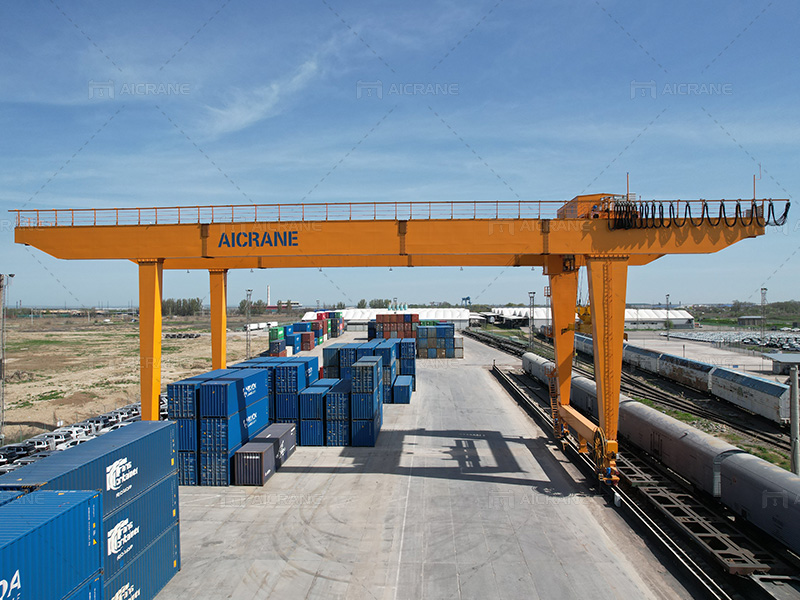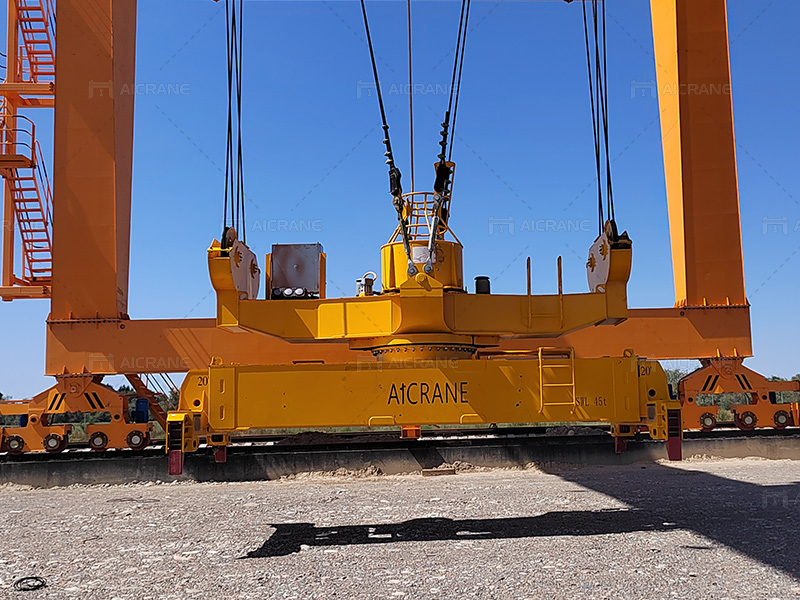Container gantry cranes, pivotal in the logistics and shipping industries, are essential for the efficient handling and movement of containers at ports and container terminals. The key component of these cranes is the spreader, which attaches to the crane and secures the container for lifting. Spreaders come in various types, each designed for specific functions and offering distinct advantages. Understanding these types and their features can help in optimizing container handling operations.

Types of Container Gantry Crane Spreaders
1. Fixed Spreaders
Fixed spreaders are the simplest type, designed to handle containers of a specific size, typically 20 feet or 40 feet. These container gantry crane spreaders are rigid and cannot adjust to different container sizes.
Functions:
- Simple Lifting: Primarily used for lifting containers of a fixed size without the need for adjustment.
- Durable Construction: Built for heavy-duty operations where container size variation is minimal.
Advantages:
- Robust and Durable: Due to their fixed design, they have fewer moving parts, reducing maintenance needs and increasing lifespan.
- Cost-Effective: Generally less expensive than adjustable spreaders, making them a cost-effective option for ports dealing with standardized container sizes.
- Ease of Use: Simplicity in design leads to ease of use and less training required for operators.
2. Telescopic Spreaders
Telescopic spreaders are adjustable and can handle containers of different lengths, typically ranging from 20 to 45 feet. They can extend or retract to match the container’s size.

Functions:
- Adjustable Length: Capable of handling multiple container sizes, making them versatile for ports with varying container traffic.
- Efficient Operations: Facilitate quicker handling times by adapting to different container sizes without changing equipment.
Advantages:
- Versatility: Can accommodate various container sizes, reducing the need for multiple spreaders.
- Operational Efficiency: Enhances efficiency by allowing quick adjustments to container size, thus speeding up the loading and unloading process.
- Space-Saving: Eliminates the need for additional spreaders, saving storage space and reducing equipment clutter.
3. Twin-Lift Spreaders
Twin-lift spreaders are designed to handle two 20-foot containers simultaneously. They are equipped with mechanisms to lock onto two containers at once, making them ideal for high-capacity ports.
Functions:
- Simultaneous Lifting: Enables the simultaneous lifting of two 20-foot containers, increasing handling capacity.
- Independent Operation: Each side of the spreader can operate independently, allowing flexibility in container handling.
Advantages:
- Increased Productivity: Significantly boosts productivity by doubling the lifting capacity compared to single-lift spreaders.
- Cost Efficiency: Reduces the number of RMG crane movements required, saving time and operational costs.
- Flexible Operations: Can handle single or double container loads, providing operational flexibility.
4. Automatic Spreaders
Automatic spreaders are equipped with advanced technology to enable remote operation and automatic locking and unlocking of containers. These spreaders enhance operational efficiency through automation.
Functions:
- Remote Operation: Allows operators to control the spreader from a remote location, reducing the need for manual intervention.
- Automatic Locking/Unlocking: Features automated mechanisms for securing and releasing containers, streamlining the handling process.
Advantages:
- Enhanced Safety: Reduces the need for manual intervention, minimizing the risk of accidents and injuries.
- Operational Efficiency: Speeds up the loading and unloading process through automation, leading to faster turnaround times.
- Reduced Labor Costs: Decreases reliance on manual labor, resulting in lower operational costs.
5. Rotating Spreaders
Rotating spreaders can rotate containers 360 degrees, providing flexibility in container positioning. These spreaders are particularly useful in confined spaces where precise container placement is required.
Functions:
- 360-Degree Rotation: Allows for precise positioning of containers, making them ideal for tight spaces and specific stacking requirements.
- Versatile Handling: Suitable for various container types and sizes, enhancing operational flexibility.
Advantages:
- Precision Handling: Facilitates accurate container placement, reducing the risk of damage and optimizing storage space.
- Space Optimization: Ideal for ports with limited space, as they allow for efficient use of available storage areas.
- Improved Handling Efficiency: Enhances overall handling efficiency by allowing easy container repositioning.
Conclusion
The variety of container gantry crane spreaders available today caters to the diverse needs of modern ports and container terminals. Fixed spreaders offer simplicity and durability for standardized operations, while telescopic spreaders provide the versatility needed for handling various container sizes. Twin-lift spreaders significantly boost productivity by doubling lifting capacity, and automatic spreaders enhance safety and efficiency through automation. Rotating spreaders offer precision handling, making them ideal for ports with space constraints.
Choosing the right spreader type depends on the specific operational requirements, container traffic patterns, and space availability at a port. By understanding the functions and advantages of each spreader type, port operators can make informed decisions to optimize their container handling operations, reduce costs, and improve overall efficiency.
As technology continues to advance, the development of more sophisticated spreaders will likely further enhance the capabilities of container gantry cranes, ensuring they meet the ever-evolving demands of global trade and logistics. To learn more, visit https://steelmillcranes.com/